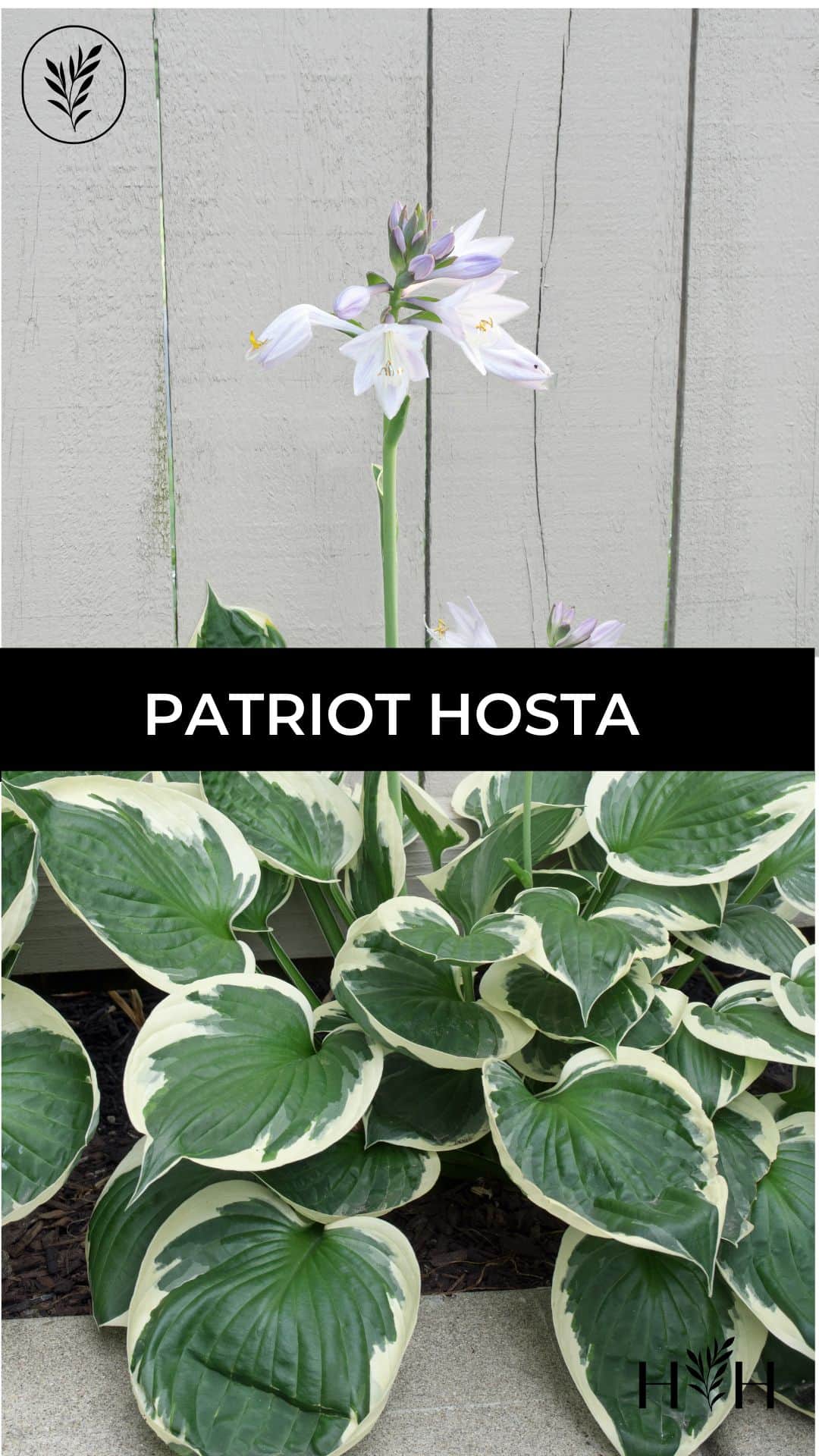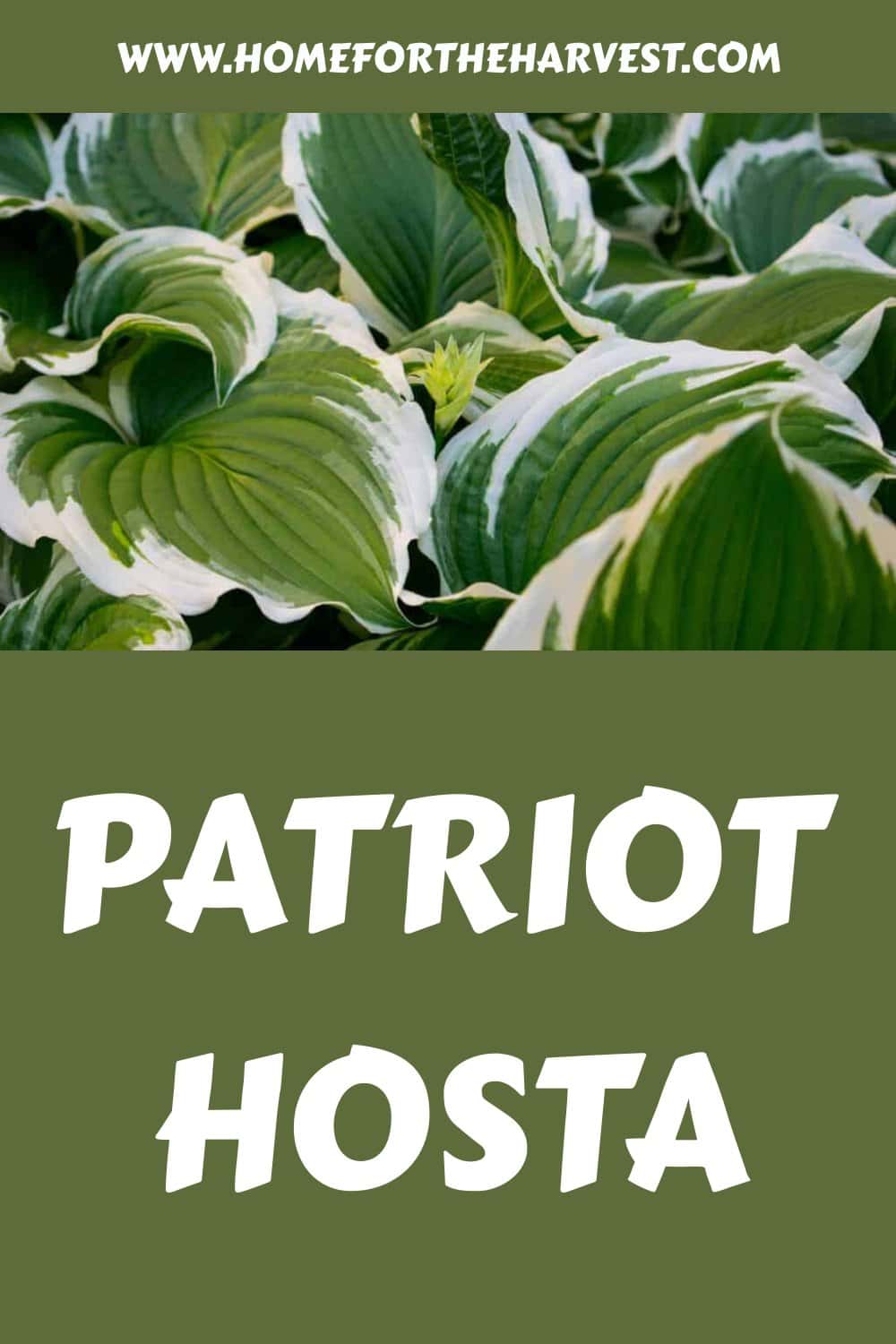The Patriot hosta is a popular variegated variety with deep green leaf centers and white edges. This cultivar is medium-to-large in size, creating a foliage mound 3-4 feet wide and up to 2 feet high. These plants are known as low-maintenance landscaping plants that can brighten up low-light areas of the yard.
Introduction to Patriot hostas
The ‘Patriot’ hosta stands out for its unique and vibrant foliage. Its distinctive feature is its deep green leaves with bold, creamy white margins, creating a dramatic contrast that adds visual interest to any shade garden. The leaves are heart-shaped and have a slightly glossy texture. ‘Patriot’ is quite possibly the most popular hosta variety in the world.
‘Patriot’ hostas are renowned for their adaptability and ease of care, thriving in a range of shade conditions, from full to partial shade. They prefer well-draining soil enriched with organic matter and consistent moisture, though they are relatively drought-tolerant once established.
‘Patriot’ hostas typically reach a moderate size of 3-4 feet wide, making them versatile for various garden settings. These hostas are ideal for creating a lush, textured underplanting in woodland gardens and in borders. They also make a lovely standout specimen in a shade garden or in a planter pot.
One of the advantages of the ‘Patriot’ hosta is its increased resistance to common pests like slugs, which are often a problem for hostas. While no hosta is entirely pest-proof, the ‘Patriot’ tends to be less susceptible than many other varieties, making it a more low-maintenance option for gardeners.
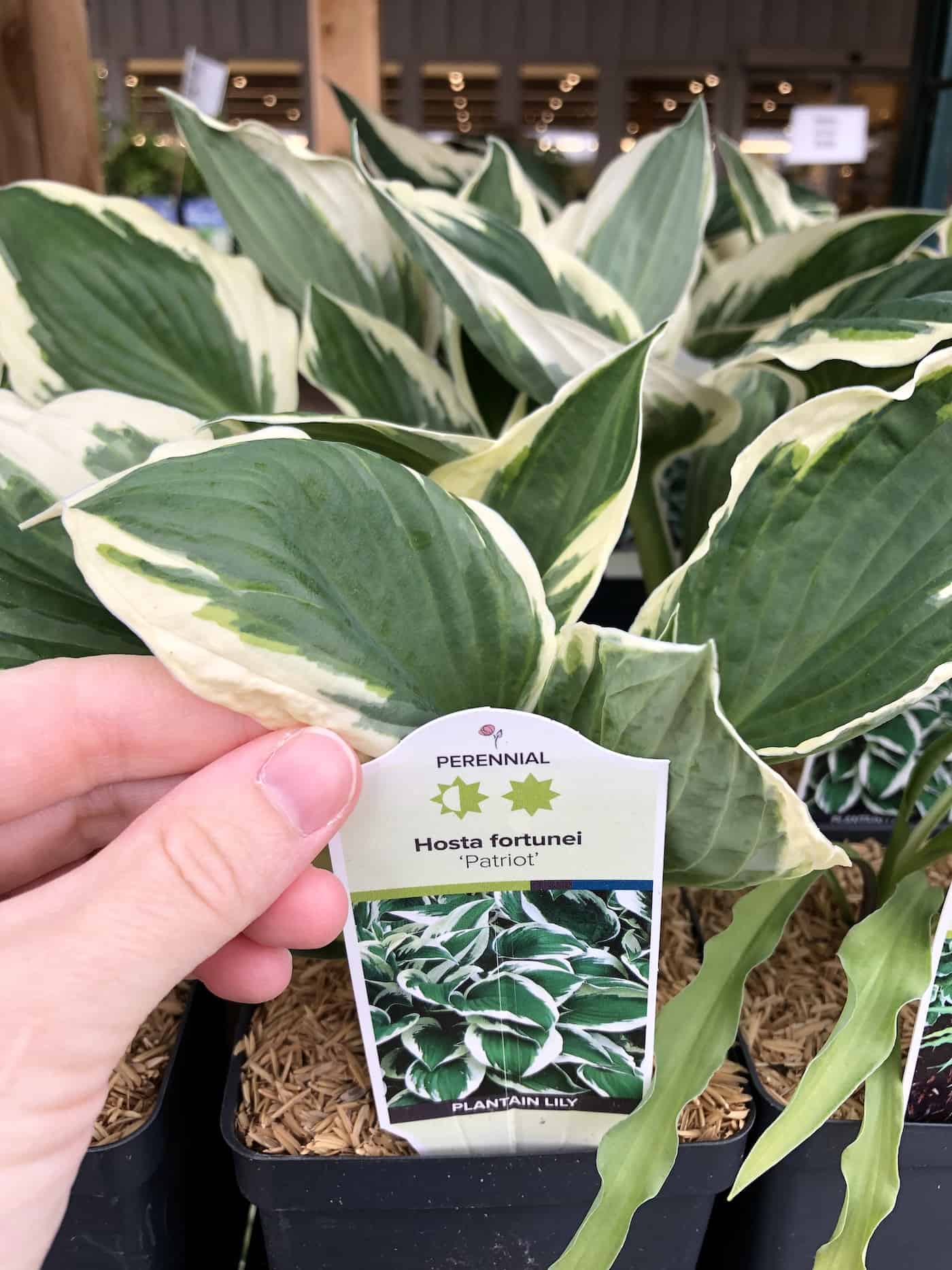
Patriot Hostas originated as a sport (mutation) of the popular Francee hosta. The Patriot Hosta was named the 1997 Hosta of the Year by the American Hosta Growers Association and went on to receive the prestigious RHS Award of Garden Merit in 2012.
The Patriot hosta was developed by John Lee Machen Jr. of Mobjack Nursery in Virginia. This variety was introduced in 1991 and soon became one of the most popular hosta cultivars in the marketplace.
Patriot Hostas are often used to develop new hosta varieties. Some hosta cultivars developed as sports from Patriot include Fire and Ice hosta, Loyalist hosta, Midnight Ride hosta, Patriot’s Fire hosta, Paul Revere hosta, and Patriot’s Green Pride hosta.
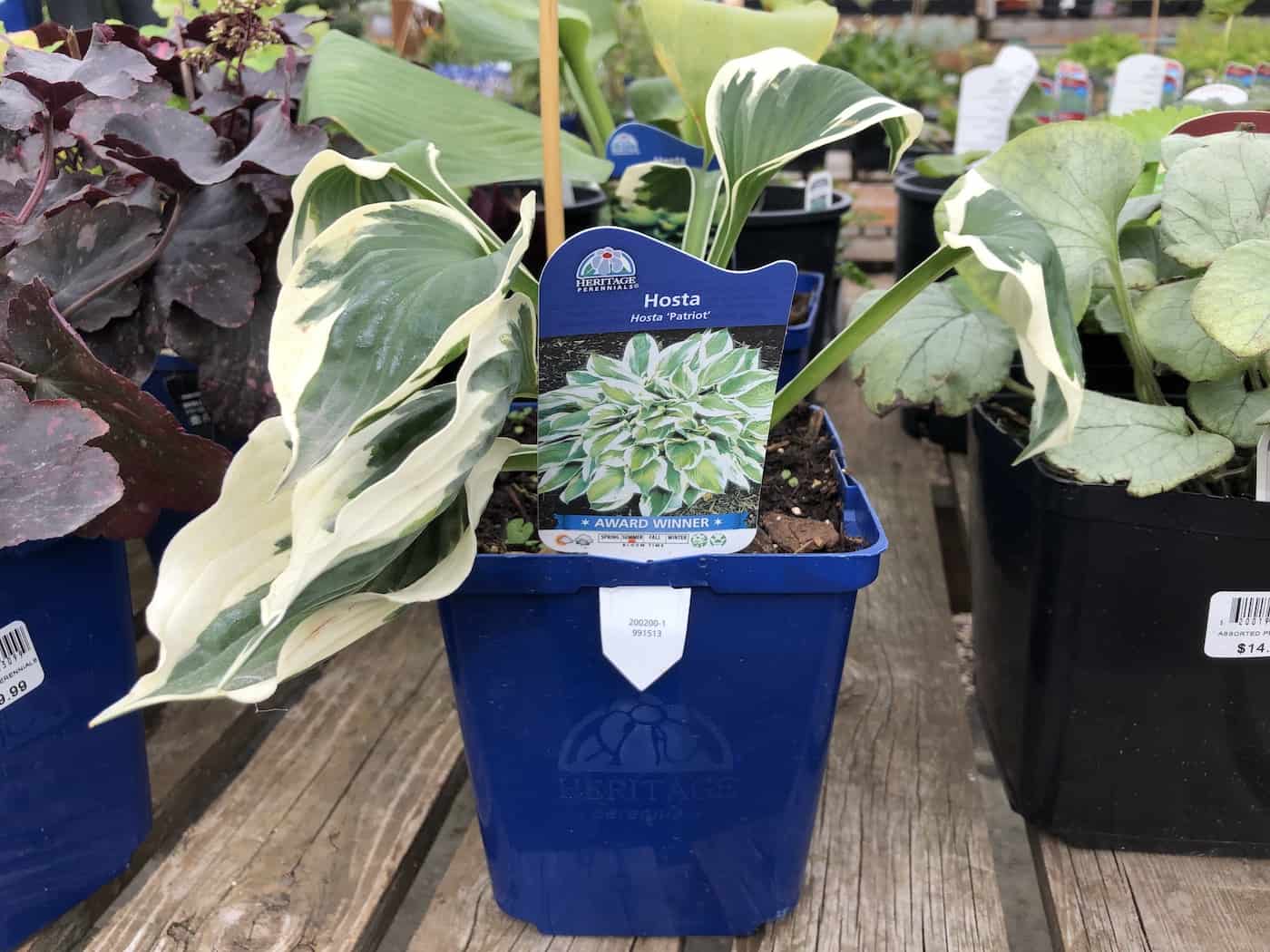
Choosing a planting location
The Patriot hosta is a versatile variety in terms of planting location and does not demand specific conditions. While it will thrive in an optimal location, it usually does just fine in less-than-perfect spots.
Hostas thrive in partial to full shade, making them an ideal choice for areas under trees, on the north side of buildings, or in any garden spot that receives filtered sunlight. While it can tolerate some morning sun, the ‘Patriot’ hosta’s distinctive variegated leaves are prone to scorching in the intense afternoon sunlight, which can fade the vibrant margin colors and damage the foliage. Therefore, a spot that offers protection from the harsh midday and afternoon sun will ensure the leaves maintain their striking contrast and prevent them from turning brown.
Soil quality and moisture levels are also key factors in finding an optimal planting location. These plants prefer rich, well-draining, slightly acidic soil that retains moisture without becoming waterlogged/muddy. If the garden soil is heavy clay or particularly sandy, amending it with organic compost or peat moss can improve both nutrient content and drainage capabilities, creating an ideal environment for root growth.
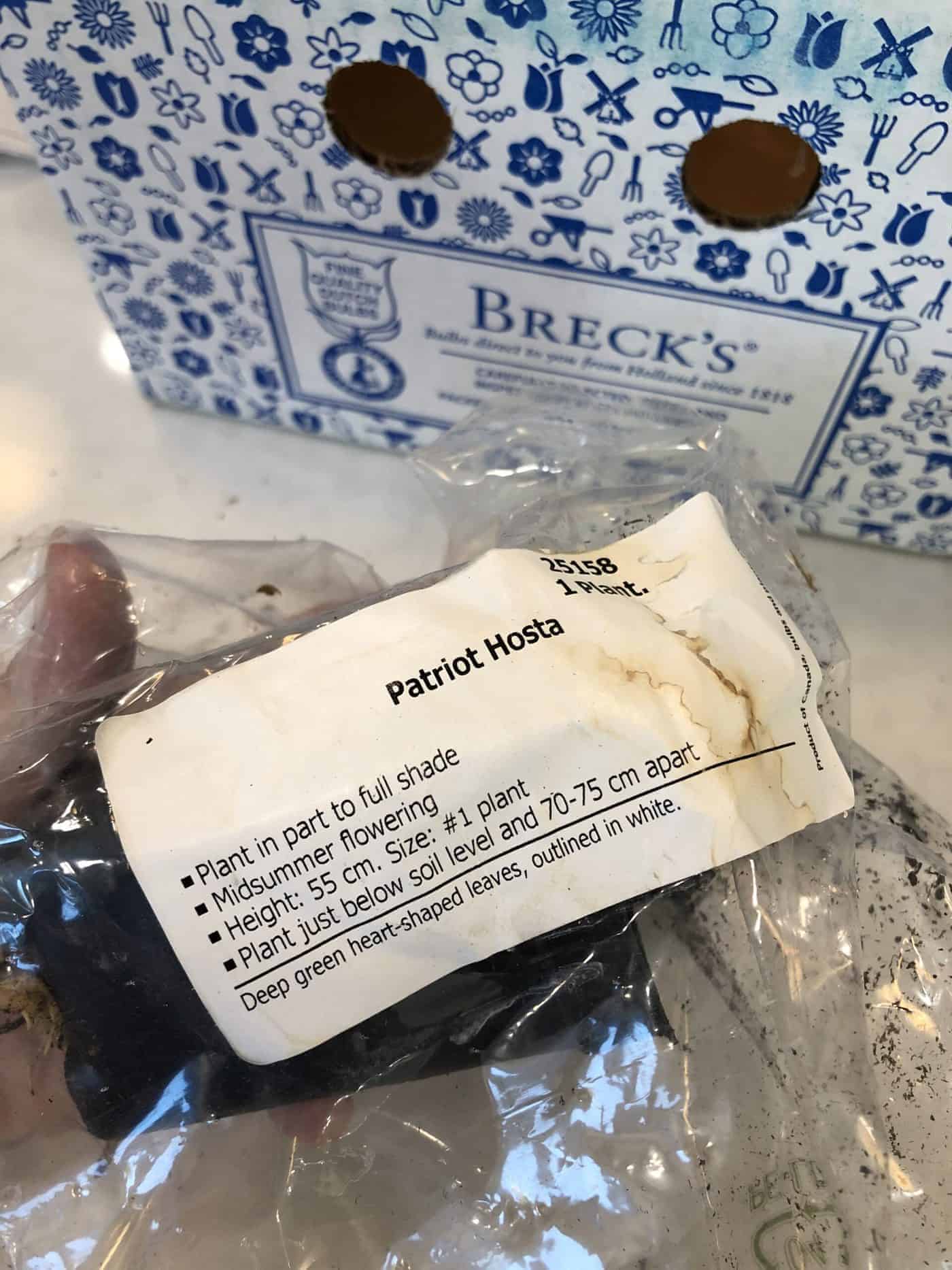
Planting Patriot hostas
Patriot hostas are easy to plant. Plants are either sold as potted plants in the garden center during the growing season or shipped as dormant plants during the fall or early spring.
Hostas that come in small nursery pots can be planted with the pot’s soil level even with the surrounding garden soil. Bare root hostas can be planted just below the soil level.
Here are the basics for how to plant a hosta:
- Prepare the soil: Ensure the soil is well-draining and rich in organic matter. Amend poor soil with compost or other organic material. This is especially important in heavy clay soil or overly sandy soil.
- Dig the hole: Make the hole twice as wide as the root ball. The hole should be just as deep as the root ball.
- Take the hosta out of its pot: Remove the hosta carefully. Then, loosen the thick white roots by pulling them away from the root ball.
- Plant the hosta: Place the hosta in the hole, ensuring the top of the root ball is level with the soil surface. Arrange any thick white roots so they point outwards from the center of the plant.
- Backfill the hole: Fill in around the hosta with soil, patting down gently to remove air pockets.
- Water well: After planting, water the hosta thoroughly to settle the soil and hydrate the roots.
- Apply mulch: Mulch around the plant with organic mulch to retain moisture, regulate soil temperature, and suppress weeds.
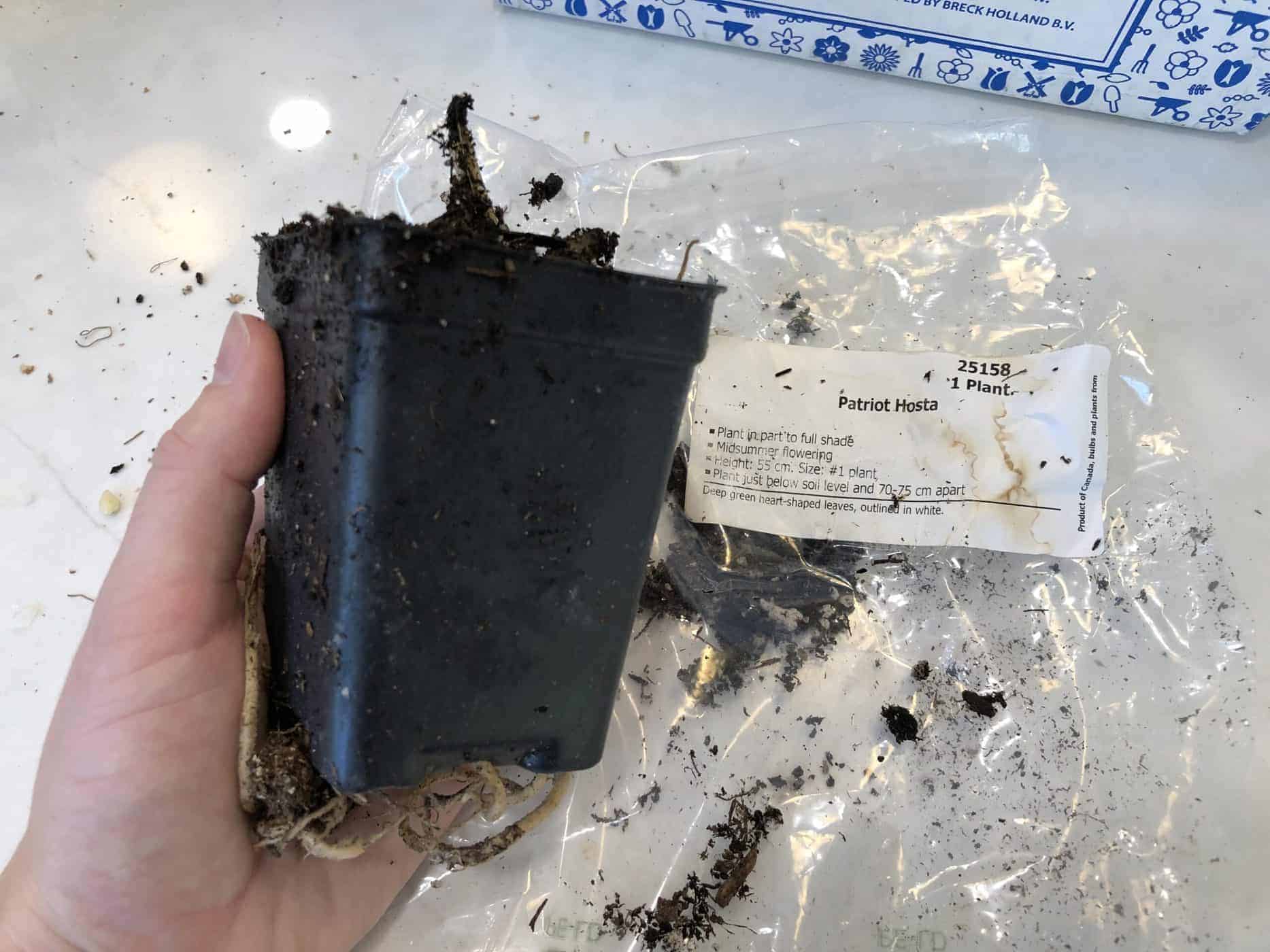
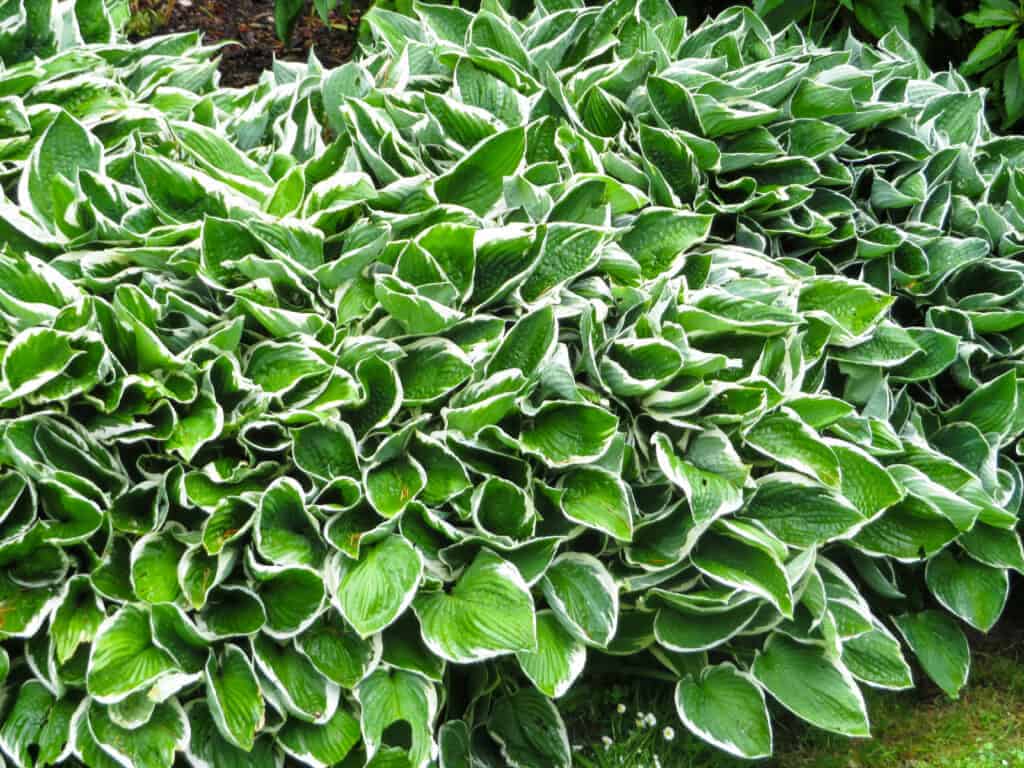
Caring for Patriot hostas in the garden
Hostas are low maintenance in comparison to many other ornamentals, but they do best with a bit of attention throughout the year.
In the spring, clean up the area before the plant sprouts. Remove any dead foliage and clear debris to minimize disease and pests. As new growth appears, ensure consistent soil moisture, especially if the spring is dry. You can also apply a balanced, slow-release fertilizer and a fresh layer of organic mulch.
Maintain regular watering throughout the growing season, especially during hot, dry periods. Hostas prefer moist soil. Watch for slugs and snails, and remove any that you come across. Remove spent flower stalks to keep the plant looking tidy and focus energy on foliage growth.
In the fall, gradually reduce watering as temperatures cool off. The hosta foliage tends to become ragged by mid-fall and is generally killed by the first hard frost. Cut back the dead foliage and remove it. In very cold climates (Zones 2-4), consider applying a thick layer of protective mulch over the top of the plant once the ground starts to freeze. Hostas are dormant in winter, so no active care is needed during this time.
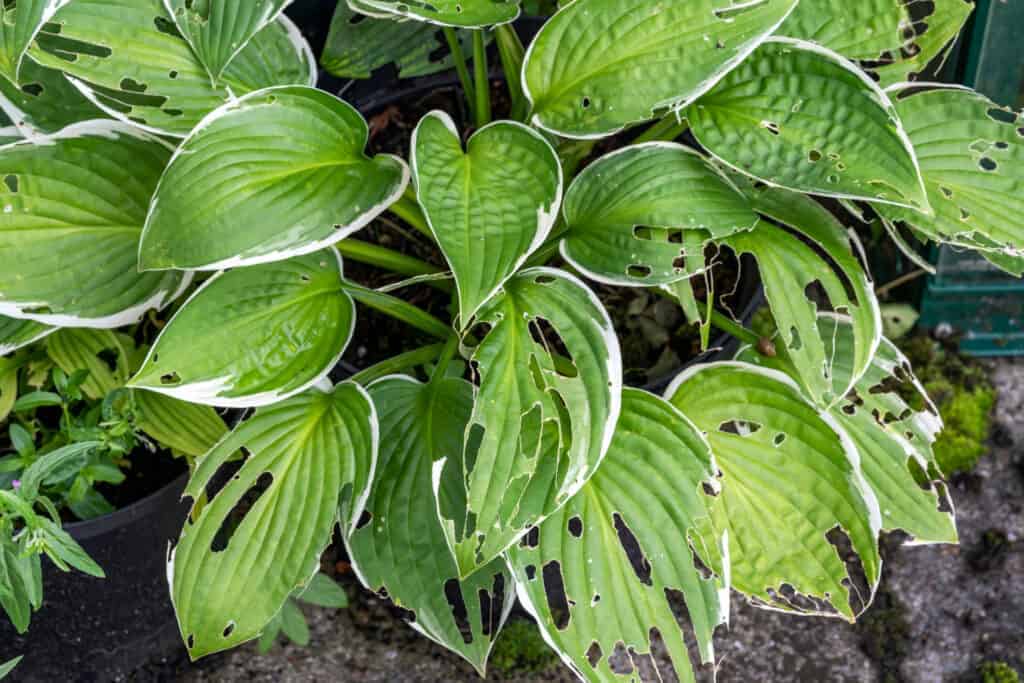
Pests and growing problems
‘Patriot’ hostas, like other hosta varieties, are susceptible to certain pests, with slugs and snails being the most notorious. These pests are attracted to the moist, shaded environments that hostas thrive in, and they can cause significant damage by chewing large, irregular holes in the leaves. Environmentally friendly slug deterrents, such as diatomaceous earth or beer traps, can be effective against slugs and snails.
Another pest to watch for is the hosta leaf miner, a small fly whose larvae tunnel within the leaves, creating distinctive trails or blotches. Regularly inspecting plants for early signs of pests is crucial for prompt intervention.
Deer and rabbits can also pose a problem, as they are fond of nibbling on the soft, lush leaves, often severely damaging the plant. In areas prone to deer and rabbit visits, physical barriers or repellents may be necessary.
In terms of diseases, fungal diseases are the most common. Fungal diseases like Anthracnose can cause dark, water-soaked lesions on leaves, leading to a tattered appearance. Root and crown rot, often resulting from overly wet conditions, can cause the plant to wilt and the roots to decay.
Effective management of pests and diseases begins with good cultural practices. Ensuring proper spacing for adequate air circulation and avoiding overhead watering can reduce the risk of fungal diseases.
Viral diseases, though less common, can be quite detrimental. Hosta Virus X (HVX) is one such virus to be aware of; it causes mottling and distortion of the leaves. Once a plant is infected with HVX, it cannot be cured and should be removed to prevent the spread to other hostas. Purchasing hostas from reputable sources and avoiding the introduction of infected plants are key preventive measures against HVX and other viral diseases.
Similar hosta cultivars
Here are some hosta cultivars with green and white variegated leaves similar to the Patriot hosta:
- Fire & Ice hosta
- Francee hosta
- Liberty hosta
- Moon River hosta
- Regal Supreme hosta
- Minuteman hosta
- Percy hosta
- Queen Josephine hosta
- Bold Intrigue hosta
- Lakeside Kaleidoscope hosta



